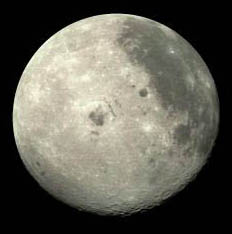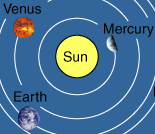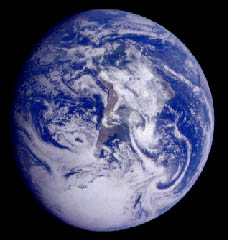
| Mass (Earth=1) | 0.0123 |
| Equatorial diameter (km) | 3480 |
| Period (days) | 27.3 |
| Mean distance from Earth, 106 m | 384 |
| Density (water=1) | 3.34 |
| Surface gravity m/s2 | 1.67 |
|

The Moon is our nearest neighbor, but it has evolved very differently from the Earth because it's gravity is too weak to hold an atmosphere. With no air, the lifeless Moon has no surface erosion from wind, rain, or snow, and thus lunar craters and even astronaut footprints last for millions of years.
Man first set foot on the Moon on July 20, 1969 when the landing craft from the Apollo 11 mission touched down on the Moon.
The temperature extremes on the Moon are from about 107°C down to -153°C.
The moon's average orbital speed is 5700 km/hr. It's orbit is inclined at 5.2° to the ecliptic, so you don't get a lunar eclipse or solar eclipse every time the Moon and Sun are aligned with the Earth. The eccentricity of the Moon's orbit is about 5% so the Moon's apparent size changes. This affects solar eclipses: when the Moon's angular size is near a minimum, it doesn't completely cover the Sun's disc and you get an annular eclipse.
|


